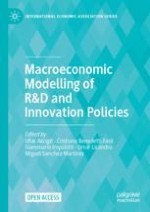Open Access 2022 | Open Access | Buch

Macroeconomic Modelling of R&D and Innovation Policies
herausgegeben von: Prof. Ufuk Akcigit, Cristiana Benedetti Fasil, Prof. Giammario Impullitti, Prof. Omar Licandro, Miguel Sanchez-Martinez
Verlag: Springer International Publishing
Buchreihe : International Economic Association Series